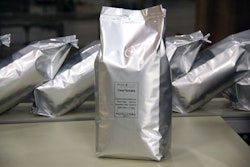1. Flexibility of equipment for other applications. Don’t assume you’re developing requirements just for this particular package. Marketing may come knocking a year later with a request to go to a different package size. All your assumptions in the beginning are no longer valid; suddenly, your equipment has limited capabilities. You’ll be faulted because you didn’t think about what’s coming next.
2. Determining speed requirements. This really breaks down into multiple components: throughput (nominal, jog, surge) as well as the conveyor speed through the labeling area. Devise two speed requirements: one required to produce enough product for the initial launch and one for ongoing production. Make sure the speed the labeler will run at day in and day out will be 15-20 percent lower than the maximum speed of the equipment to avoid extra wear and tear. Also, build in excess capacity (15 percent is a rule of thumb) for future growth.
3. Put cost in proper perspective. When initially canvassing vendors, don’t eliminate a machine right away based on cost before you’ve done a true apples-to-apples comparison. One manufacturer’s price may include more options relative to the others. Also, don’t automatically choose the lowest-cost machine, because you may pay an additional price later on in reliability.
4. Follow-up training. It’s common to train operators and mechanics when the equipment is installed. But it’s critical to schedule follow-up training, either to reinforce certain things after the equipment has been running for a time or to address issues that have cropped up. Be sure to specify this follow-up training as part of your requirements.
5. Spare parts strategy. Make sure to identify common wear parts and stock them in-house. Examine wear components for continuous improvement programs. For labeling machines, that typically includes belts, sensors, and air cylinders.
6. Design considerations. Machine design should be robust and facilitate fast changeover. If adjustments are too sensitive, you’ll take excessive time to dial in the proper settings. Look for these qualities: overall hygienic design, easy to clean and maintain, and easy access for operators and maintenance personnel. Know the product idiosyncrasies and understand the technologies they incorporate.
Look at ease of material change and downtime, splice capability, and waste web. The capability to detect missing labels is important. With large labeling systems, specify adhesion specifications in terms of a pull test. Placement tolerances on your product or package may be key to whether a labeler performs well or not.
7. Pressure sensitive is better than cold glue. Make the extra investment for pressure sensitive labeling equipment; it’s simpler, faster, more reliable, and takes less maintenance than cold glue. Keep the machine clean; don’t allow gummy build-up to accrue. With PS labelers, you have more opportunity to leverage redundant heads. Theoretically you could have one operator running six aggregates. With cold glue labelers, you just can’t do that as easily, if at all. Apply due diligence. Because there are so many types of labeling machines, it is essential to do your research and determine your need, specifically based on the type of labeling and the volume of output you need. Other considerations include label placement, label design, and the type and amount of variable data to be placedon the label. Compare your answers to the latest available manufacturer specification sheets, sales team responses, and feedback from industry colleagues that might have already put the machines to the test.






















